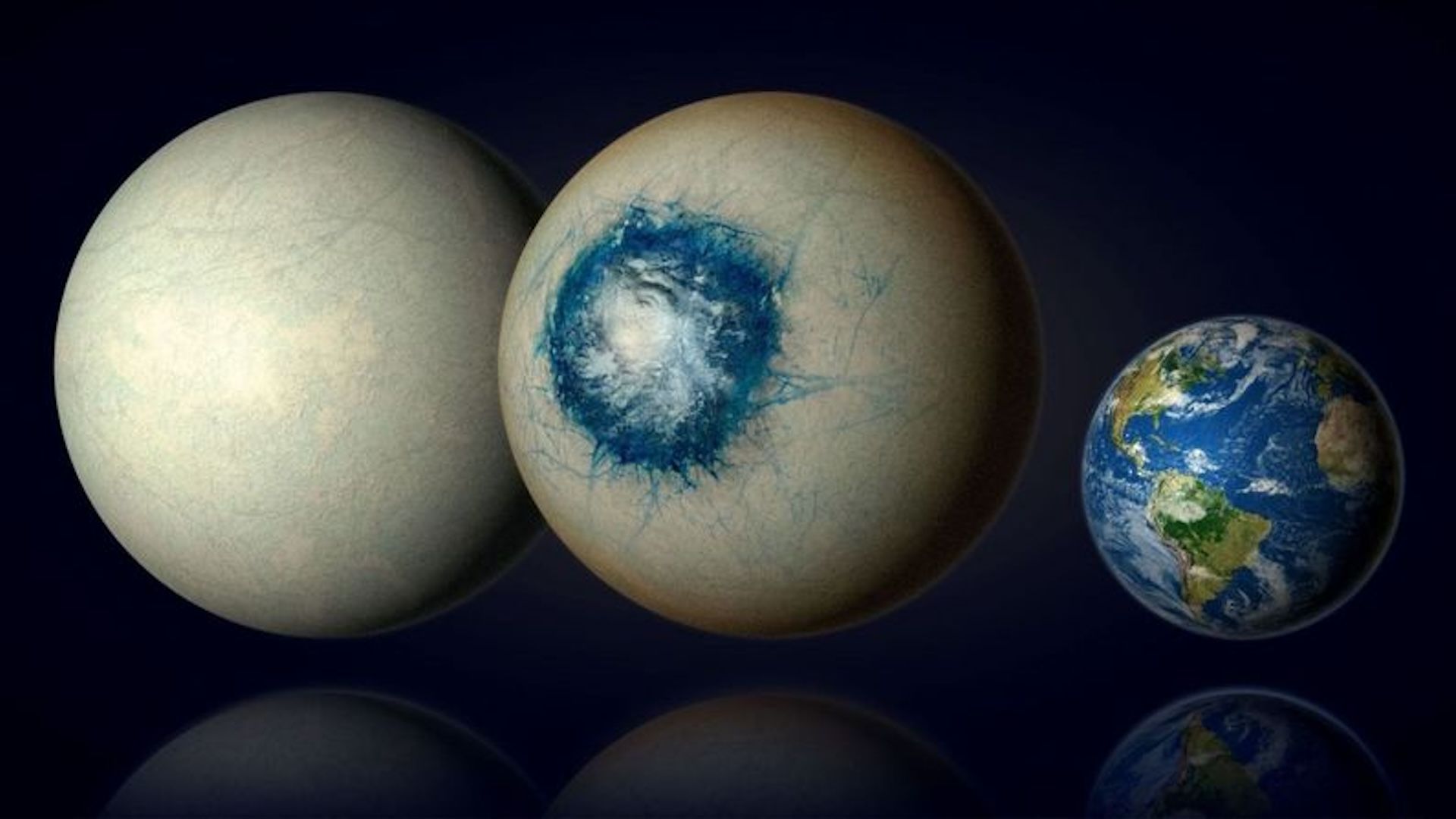Follow us on Google News (click on ☆)

The exoplanet LHS 1140 b might be entirely ice-covered (left) or a frozen world with a substellar liquid ocean and a cloudy atmosphere (center). The planet is about 1.7 times larger than Earth (right).
Credit: BENOIT GOUGEON, UNIVERSITÉ DE MONTRÉAL
Discovered in 2017, LHS-1140b was initially considered a "mini-Neptune" with a dense atmosphere composed of water, methane, and ammonia. However, recent observations from the James Webb Space Telescope have provided evidence suggesting a planet more icy and wet than previously thought, which might mean it's potentially habitable.
Charles Cadieux, an astrophysicist at the University of Montreal, explains that, among all known temperate exoplanets, LHS-1140b could well be the best candidate to indirectly confirm the presence of liquid water on the surface of an extraterrestrial world beyond our Solar System. This discovery would be a major step in the search for habitable exoplanets.
LHS-1140b is about 1.73 times larger and 5.6 times more massive than Earth. Due to gravitational locking with its host star, a red dwarf cooler than our Sun, one side of the planet always faces the star, creating a potentially habitable zone where temperatures can reach 68 degrees Fahrenheit (20 degrees Celsius).
To study LHS-1140b, researchers employed the slitless spectrograph of the James Webb, which allows for analyzing the planet's composition by observing the starlight passing through its atmosphere. Evidence of nitrogen, a key component of Earth's atmosphere, has been detected, ruling out a rocky planet or a mini-Neptune in favor of an ice-covered world.
Although most of the planet is likely frozen, the side facing the star could offer favorable conditions for life, with temperatures high enough to maintain a liquid ocean. René Doyon, a physicist at the University of Montreal, notes that confirming an atmosphere rich in nitrogen will require another one to three years of additional observations.